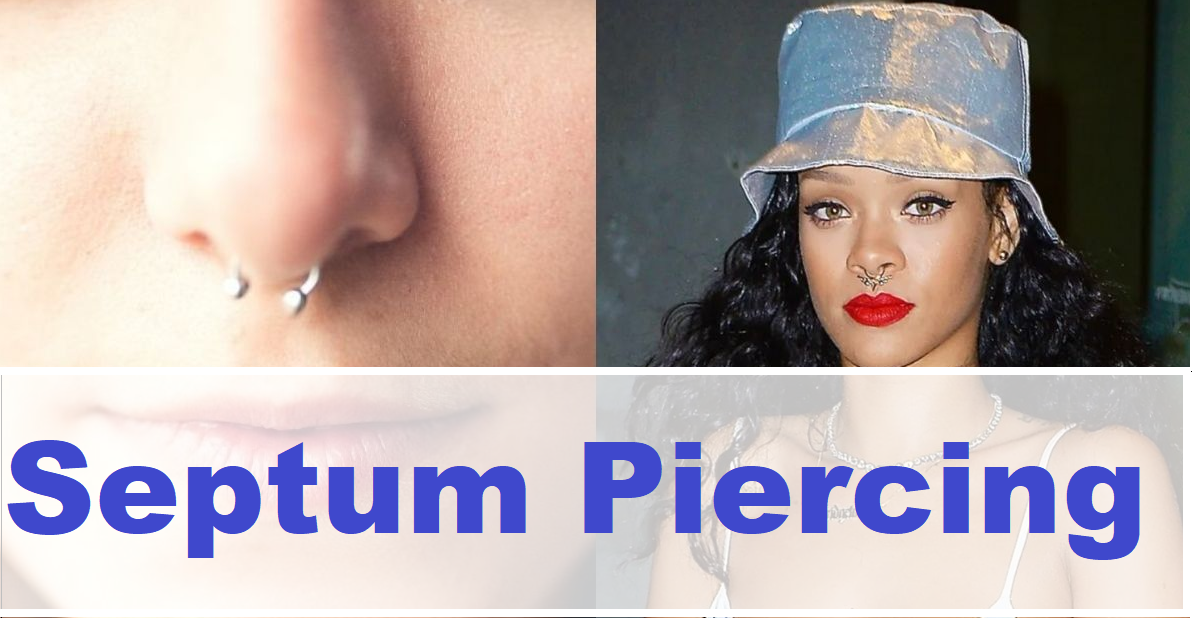A septum piercing is a piercing that runs through the nasal septum. The nasal septum is the partition that separates the nose into two nasal cavities or nostrils. The nasal septum is flimsy and made up of cartilage. A needle is passed through the anterior (front) part of the septum and then the jewelry is set in place, which is typically a ring, horseshoe, or bar.
Most piercings can be awkward since a needle is pushed through the skin. The level of pain while piercing changes depending on where the piercing is done and the individual’s pain tolerance. Septum piercings can be painful, particularly if the septum deviates. It feels like a strong pinch/prick/sting.

Table of Contents
How are Septum Piercings Done?
Septum piercings are performed like most piercings. There are some variations in the method. The piercer will disinfect the area. They use a little clamp to hold and support the septum. A hollow needle, also named a cannula, is passed through the septum to make the hole. A piece of jewelry, generally made of metal (surgical stainless steel, titanium, or gold), is worn through the new hole.
What Happens After Septal Piercing?
The initial period after the piercing can be extremely painful, and the nose can be tender to touch. This initial part of healing carries around 1-3 weeks. Septum piercings can take around 6-8 months to fully heal. The jewelry can be changed after 6-8 weeks, delivered it has healed well. However, it is recommended to leave the original jewelry on for as long as possible.
The snout can be cleaned every day with salt and water solution or saline nasal drops/sprays. It is normal to have a minimal amount of watery discharge, which may be bloodstained, and crust formation near the piercing. If the discharge is yellow or green and/or foul-smelling, it means infection and requires medical attention. When the piercing has been on for more than a few months, the hole may never fully close, but may shrink. If the hole shrinks, re-piercing may be mandated.
What are the Complications of Septum Piercing?
Some possible hazards associated with a septum piercing include:
- Allergic reactions: This can happen if the jewelry contains nickel or other reactive metals.
- Infections: Infections can lead to the accumulation of pus.
- Septal hematoma: Accumulation of blood within the septum. This can cause extreme pain, swelling, and tenderness. It can lead to septum perforation (hole formation) if not treated.
- Bloodborne diseases: There is a risk of contracting bloodborne diseases, such as human immunodeficiency virus (HIV), Hepatitis B or C if the instruments were not sterilized properly.
- Scarring: A stout scar tissue or keloid can form. Aesthetically, they are typically not visible but can cause discomfort.
- Tearing: The jewelry used can get caught on something and be torn off, leading to a tear, pain, and bleeding.
